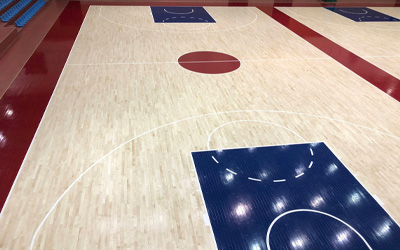નવેમ્બર . 09, 2024 18:43 Back to list
Durable and Safe Surface Solutions for Play Areas and Recreational Spaces
The Importance of Playground Flooring for Safe and Engaging Play
Playgrounds are essential spaces for childhood development, fostering physical, social, and cognitive skills through play. As children explore, run, climb, and interact with their peers, the safety and functionality of these environments significantly hinge on the flooring materials used. Playground flooring plays a pivotal role in safeguarding children from injuries while enhancing the overall play experience. This article delves into the key aspects of playground flooring, including types of materials, safety features, maintenance considerations, and the impact on play.
Types of Playground Flooring
When it comes to selecting flooring for a playground, several materials are available, each offering unique benefits
1. Rubber Tiles and Mats These are among the most popular options for playground flooring. Rubber flooring provides excellent shock absorption, which minimizes the risk of injuries from falls. It is also resistant to harsh weather conditions, easy to clean, and available in various colors and patterns, allowing for creative designs that promote imaginative play.
2. Poured-in-Place Rubber This type consists of a mixture of rubber granules and binding agents, creating a seamless surface that can be customized in terms of thickness and appearance. Poured-in-place rubber is highly effective in cushioning impacts and can be designed to incorporate colorful shapes and designs, enhancing visual appeal and encouraging children to engage in play.
3. Artificial Turf Synthetic grass provides a grass-like appearance and is suitable for various activities. Modern artificial turf is often designed with cushioning beneath, adding a layer of safety. It is low maintenance and can be used in conjunction with other playground equipment to create a vibrant play space.
4. Wood Chips and Mulch These organic materials are popular for natural-themed playgrounds. They provide a soft landing surface and can be more affordable than rubber options. However, they require regular maintenance to ensure the depth is adequate to provide sufficient shock absorption and to prevent the growth of weeds.
5. Concrete and Asphalt While these materials are durable and long-lasting, they do not offer adequate cushioning for falls and can lead to severe injuries. They are typically used in areas for additional features like paths or in combination with other shock-absorbing materials.
playground flooring

Safety Features
At the heart of playground flooring design is the emphasis on safety. According to the Consumer Product Safety Commission (CPSC) guidelines, the impact-absorbing properties of the material are crucial. Different playground structures may require specific types of flooring based on the height of the equipment and the age group of the children using it. For instance, a taller slide may necessitate thicker rubber flooring to ensure sufficient protection.
Moreover, features such as drainage systems and slip-resistance treatments contribute to overall safety. Proper drainage prevents water accumulation, reducing slip hazards during wet conditions. Additionally, flooring materials should be placed level to avoid tripping risks and provide an even play surface.
Maintenance Considerations
Regular maintenance of playground flooring is vital to uphold safety standards and prolong the life of the materials. Rubber surfaces require periodic cleaning to remove debris and prevent the buildup of mold or mildew. Wood chips may need topping up to maintain effective shock absorption, while artificial turf should be brushed to keep the fibers upright and ensure an even playing area.
Impact on Play
The type of flooring chosen can also influence the types of play activities that take place. Soft and engaging surfaces encourage more vigorous play, while uneven or hard surfaces can restrict children's movements. Appropriate flooring promotes creativity, allowing for various activities from running and jumping to rolling and climbing.
In summary, playground flooring plays an indispensable role in creating safe and enjoyable play environments for children. By selecting the right materials and ensuring proper maintenance, we can foster spaces that not only protect young adventurers but also encourage their development through play. Investing in quality playground flooring ultimately lays the ground for happier, healthier children who thrive in their play experiences.
-
Premium Outdoor Court Tiles: Durable & Slip-Resistant
NewsAug.04,2025
-
Premium Outdoor Tennis Court | Durable & Weather-Resistant
NewsAug.03,2025
-
Wood Sports Flooring Enhanced by GPT-4-Turbo | Top Performance
NewsAug.02,2025
-
Sport Court Tiles with AI Innovation | Durable & Safe
NewsAug.01,2025
-
Vinyl Carpet Flooring | Durable & Waterproof Design
NewsJul.31,2025
-
Premium Basketball Board Stand with GPT-4-Turbo AI
NewsJul.31,2025

